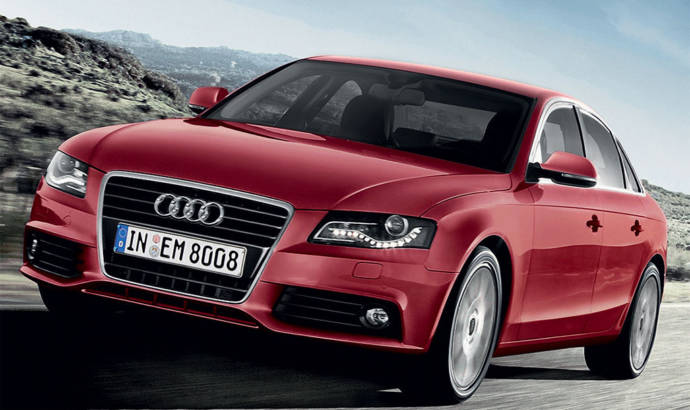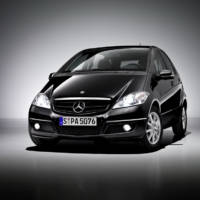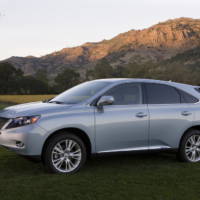Audi announced that it’s close to launching the 2009 Audi A4 2.0 TDI e that will be their most efficient standard-size sedan that needs just 4.6 liters of diesel to cover 100 kilometres (51.13 mpg). The 2009 Audi A4 2.0 TDI e will have a 2.0-litre TDI engine under its bonnet that will develop 136 horsepower (100 kW), reaching a top speed of 215 km/h (133.59 mph) and needing 9.5 seconds to get from 0 to 100 kilometres per hour.
The 2009 Audi A4 2.0 TDI e is able to offer such efficiency also thanks to its improved aerodynamics and the start-stop system helping reduce fuel consumption by some 0.2 liters/100 km, the equivalent of 5 grams CO2/km (8.05 g/mile).
The 2009 Audi A4 2.0 TDI price is 30,800 Euros while the Avant version is 2000 Euros more.
Audi press release :
Audi Unleashes the Most Efficient Standard-Size Sedan
– The new diesel-powered Audi A4 consumes a mere 4.6 l/100 km (51.13 US mpg)
– Emissions of just 119 grams of CO2 per kilometer (191.51 g/mile)
– Market launch in early June at a price of 30,800 euros
– A4 Avant also available as an ‘e’ model
Audi will soon launch the most efficient standard-size sedan. The Audi A4 2.0 TDI e will be available at dealerships starting in early June. Equipped with a 6-speed manual transmission, this sedan sips 4.6 liters of diesel per 100 kilometers (51.13 miles per U.S. gallon). It consequently emits a mere 119 grams of CO2 per kilometer (191.51 grams per mile): the best value of any vehicle in its class. “Efficiency is standard in every Audi. The A4 2.0 TDI e is particularly persuasive proof that efficiency, outstanding performance, comfort and driving enjoyment are not mutually exclusive,” says Michael Dick, Board of Management Member for Technical Development at AUDI AG. This ‘e’ model develops an output of 136 bhp (100 kW); it reaches 100 km/h (62.14 mph) in 9.5 seconds and swiftly tops out at 215 km/h (133.59 mph). The sedan can be ordered now and costs 30,800 euros. This remarkably efficient A4 is also available as an Avant.
The combined impact of several features facilitates the vehicle’s increased efficiency. The standard start-stop system is especially effective during city driving. As soon as the vehicle comes to a stop, the shift lever is in neutral, and the driver removes his or her foot from the clutch pedal, the system turns the engine off. The engine then turns back on as soon as the clutch pedal is depressed.
The start-stop system functions extremely quietly, smoothly, and quickly. While the driver is stepping on the clutch pedal to shift into first gear, the engine instantaneously returns to its idle speed. In the standardized driving cycle, the start-stop system reduces fuel consumption by some 0.2 liters/100 km, which equates to about 5 grams CO2/km (8.05 g/mile).
Furthermore, this ‘e’ model features a 6-speed manual transmission with a final-drive ratio higher by five percent — enabling a reduction in engine speed in each of the six gears. The engine-management system has also been modified for maximum efficiency. The fuel-saving low-resistance tires (205/60 R 16) improve rolling resistance and are exclusive to the A4 model line’s ‘e’ model. Standard equipment also includes the recovery of braking energy. Aided by intelligent alternator regulation, this system converts surplus kinetic energy to electrical energy during a vehicle’s braking phases. This electrical energy is temporarily stored in the electrical system’s battery. When the vehicle resumes acceleration, the battery supplies this stored energy to the vehicle’s network — reducing the load on the alternator and thus saving fuel.
An on-board computer with efficiency program is also part of the standard-equipment package. The driver information system with gearshift indicator and efficiency-data display notifies the driver when it is sensible to shift gears to conserve fuel. The on-board computer displays all fuel-efficiency data on the center screen. These recommendations enable drivers to conserve fuel to the tune of 30 percent — simply by modifying their particular driving habits. Audi’s efficiency program continuously analyzes the vehicle’s energy consumption and gives the driver situation-specific advice on how to optimize fuel efficiency based on the given driving situation or driving style.
The A4 2.0 TDI e also consumes less fuel thanks to enhanced aerodynamics made possible by additional aerodynamic-drag optimizations such as an underbody trim panel, the partially enclosed radiator grille, and the reduction in ride height of 20 millimeters (0.79 inches) facilitated by the sports chassis.
The A4 2.0 TDI e is also available as an Avant. Its combined fuel consumption amounts to just 4.9 liters of diesel per 100 kilometers (48.00 miles per U.S. gallon). This Avant consequently emits 129 grams of CO2 per kilometer (207.61 grams per mile). The basic price for the Avant is 32,800 euros.
The Most Efficient Audi Models
The A4 2.0 TDI e is the fourth Audi ‘e’ model. Another ‘e’ model is the Audi A3 1.9 TDI e, available as a three-door hatchback or a five-door Sportback. It consumes 4.5 liters of fuel per 100 kilometers (52.27 miles per U.S. gallon) and emits 119 grams of CO2 per kilometer (191.51 grams per mile). As a three-door model, the Audi A3 1.4 TFSI with start-stop system also achieves outstanding values, with fuel consumption at 5.7 l/100 km (41.27 miles per U.S. gallon) and CO2 emissions of 132 g/km (212.43 grams per mile). In the business sedan segment, the Audi A6 2.0 TDI e, available as a sedan and Avant, emits just 139 grams of CO2 per kilometer (223.70 grams per mile) while consuming just 5.3 l/100 km (44.38 miles per U.S. gallon). The Audi A8 2.8 FSI e was the first luxury sedan to remain under the threshold of 200 grams of CO2: 199 g/km (320.26 g/mile) at 8.3 l/100 km (28.34 miles per U.S. gallon). Although there is no ‘e’ in the model designation of the Audi TT 2.0 TDI quattro, it has attracted a lot of attention as a diesel sports car. The coupé’s fuel efficiency of 5.3 l/100 km (139 g/km CO2) [44.38 miles per U.S. gallon (223.70 g/mile CO2)] sets a benchmark in the sports-car segment. It accelerates from 0 to 100 km/h (62.14 mph) in just 7.5 seconds and reaches a top speed of 226 km/h (140.43 mph).

23 Apr 2009
0


